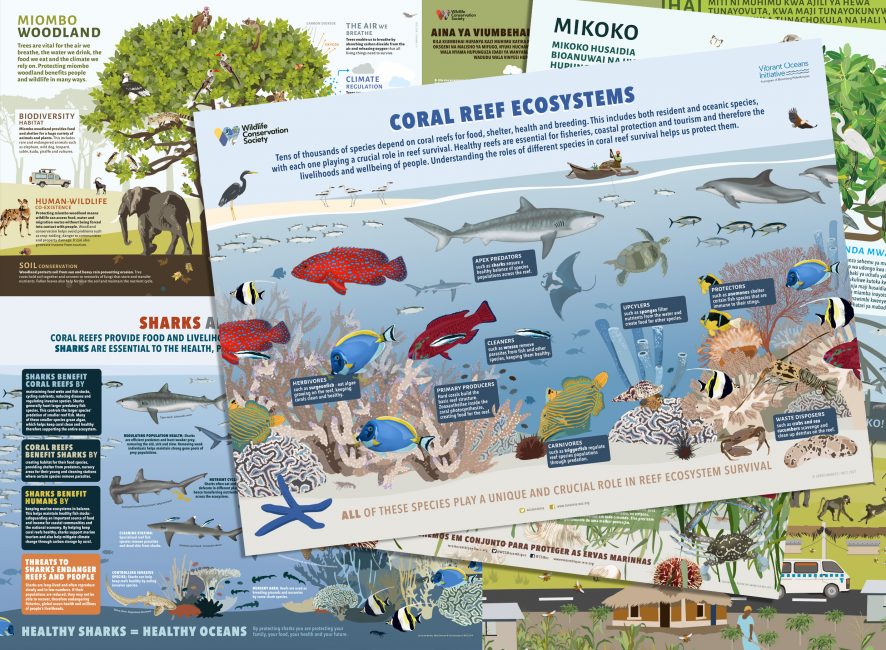
January 26, 2023
Visualizing Conservation
- as seen by -
 Julie Larsen
Julie Larsen
Sarah Markes is an artist and a conservationist working for the Wildlife Conservation Society based in Tanzania. She designs colorful graphics that inspire and educate on the biodiversity of East Africa, both on land and at sea. Each one displays strong environmental messaging that helps us visualize why it is important to protect elephants, sharks, chimpanzees, wild dogs, woodlands, coral reefs, and more.
I talked with Markes about how and why she creates these works of art.
JLM: Your graphic designs of wildlife and wild places are so engaging. What motivates you to create them?
SM: I grew up in the UK, where David Attenborough’s documentaries nurtured my interest in the natural world and love of travel. I have seen many wonderful places, but also realized the profound negative impacts humans are having on the planet for a whole host of reasons. I try to use my skills to inspire people to learn about, value, and protect the environment around them.
JLM: Have you seen the wildlife and wild places that appear in your artwork firsthand?
SM: I have been lucky enough to live and work in sub-Saharan Africa for over two decades, during which time I have tried to visit as many wild places as possible. Conservation budgets are tight and optimizing resources is always key, so I rarely get to join fieldwork, but I live vicariously through my colleagues as I am constantly sourcing material from them. They provide great reference for the species, landscapes, and people that WCS works with, informing the graphics and writing I create.
JLM: You have a vast portfolio that you share for education and awareness raising. What are your steps in creating a conservation poster?
SM: I begin by focusing on the aims of a poster – identifying the conservation issues and considering how best to convey key information to the target group in the most accessible way possible. I tailor materials to specific audiences – evaluating what is the appropriate level of information, for example, for primary school students, low-literacy community members, or NGO partners and policymakers. I then research the topic, draft text, and plan a layout with the imagery needed before starting to create illustrations. I try to gather as many references as possible for each element, using photos from colleagues, research reports, and public sources. I draw different elements in Adobe Illustrator, sometimes edit them in Adobe Photoshop, and then create the final layout in Adobe Indesign. I share drafts with colleagues for feedback and source translations into local languages as necessary. It generally takes me a couple of days to create a poster, with the research being the most time-consuming (and interesting!) part.
JLM: Have you experienced any funny moments along your creative journey?
SM: I was in Kenya many years ago visiting friends on the coast and met a man in a hotel wearing a t-shirt saying ‘Animator’. I assumed this meant he was a graphic designer that worked in animation, so I launched into an enthusiastic monologue about the power of art and moving images. He nodded and smiled, but looked increasingly bewildered before finally explaining that ‘animator’ was the name given to his job guiding sports activities for tourists and had nothing whatsoever to do with design.
JLM: What do you hope people will do with the information you share through your work?
SM: While most of the materials I create for WCS are based on conservation issues in East Africa, I get requests from all over the world from people and institutions that want to use them. Many environmental issues are universal, so for example, a poster about sharks and coral reefs I created for Zanzibar is being used in Mexico, Myanmar, Indonesia, and Mozambique, and a poster about mangroves is being used in Egypt, Singapore, Brazil, and more. My ultimate hope is that the posters are effective teaching and learning materials, helping motivate people to support conservation.
JLM: Today is World Environmental Education Day. Check out more than 20 of Markes’ conservation posters featured regularly on Wild View here and here. Print-resolution copies of the posters are available in English and Portuguese from smarkes@wcs.org.
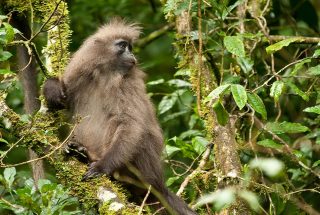
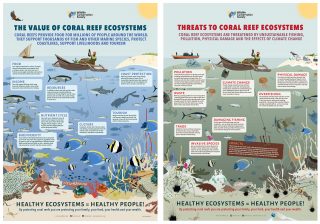
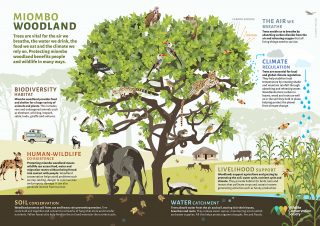
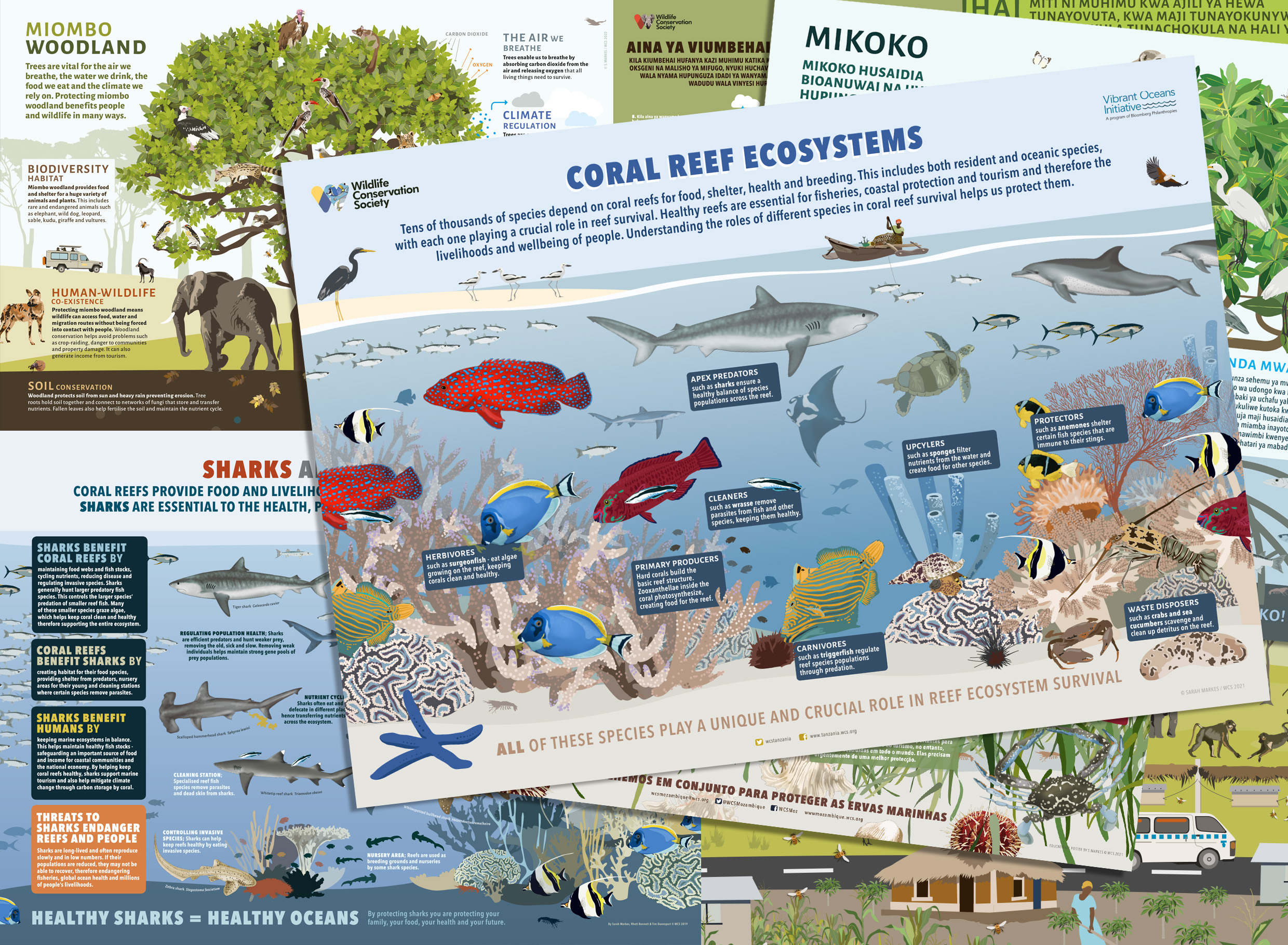
Leave a Comment
Denise McClean
January 27, 2023 at 5:04 pm
I love Sarah’s posters! They’re such a brilliant collaboration of science and art. The messaging is so clear and engaging and her illustration style is bold. I can see a fantastic “coffee table” book of these posters…hint!